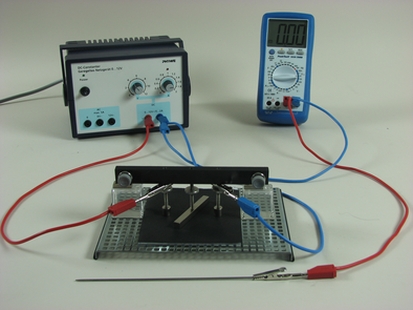setTimeout(function(){
window.print();
},500)

Technical data The electric conductor as an equipotential surfaceArticle no: P6005300  Principle Investigate how the electric field between two circular electrodes will change, when an electric conductor (here: a rod electrode) is inserted into the field. Benefits
Tasks
Learning objectives With this experiment the students will investigate how the electric field between two circular electrodes changes when an electric conductor (rod electrode) is inserted into the field. The experiment demonstrates that an electric conductor always forms an equipotential surface of an electric field due to shifting of charges. The field lines run perpendicular to its surface. Scope of delivery
| |||||||||||||||||||||||||||||||||
PHYWE Systeme GmbH & Co. KG
Robert-Bosch-Breite 10 – 37079 Göttingen – Germany
www.phywe.com
Robert-Bosch-Breite 10 – 37079 Göttingen – Germany
www.phywe.com

